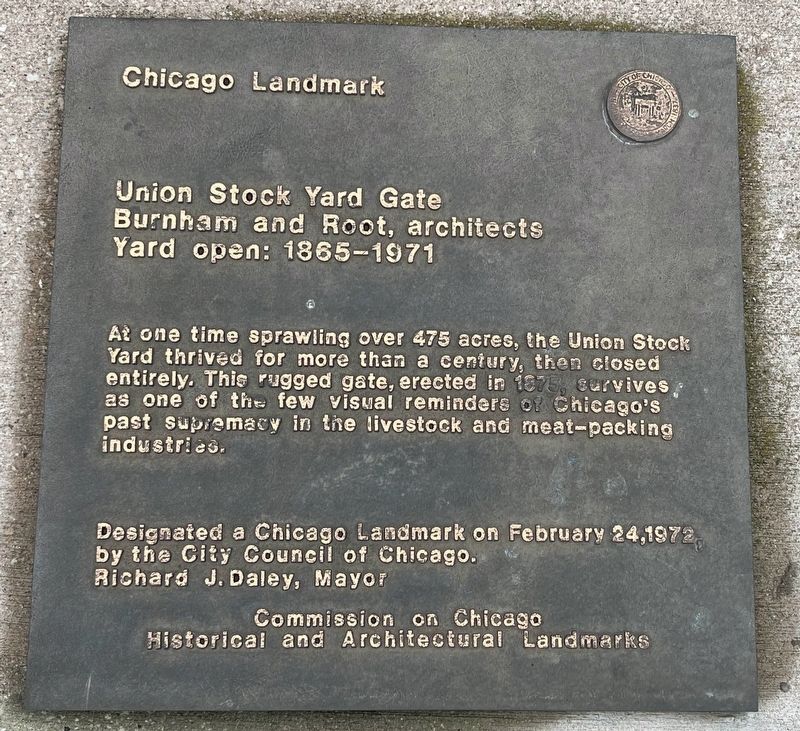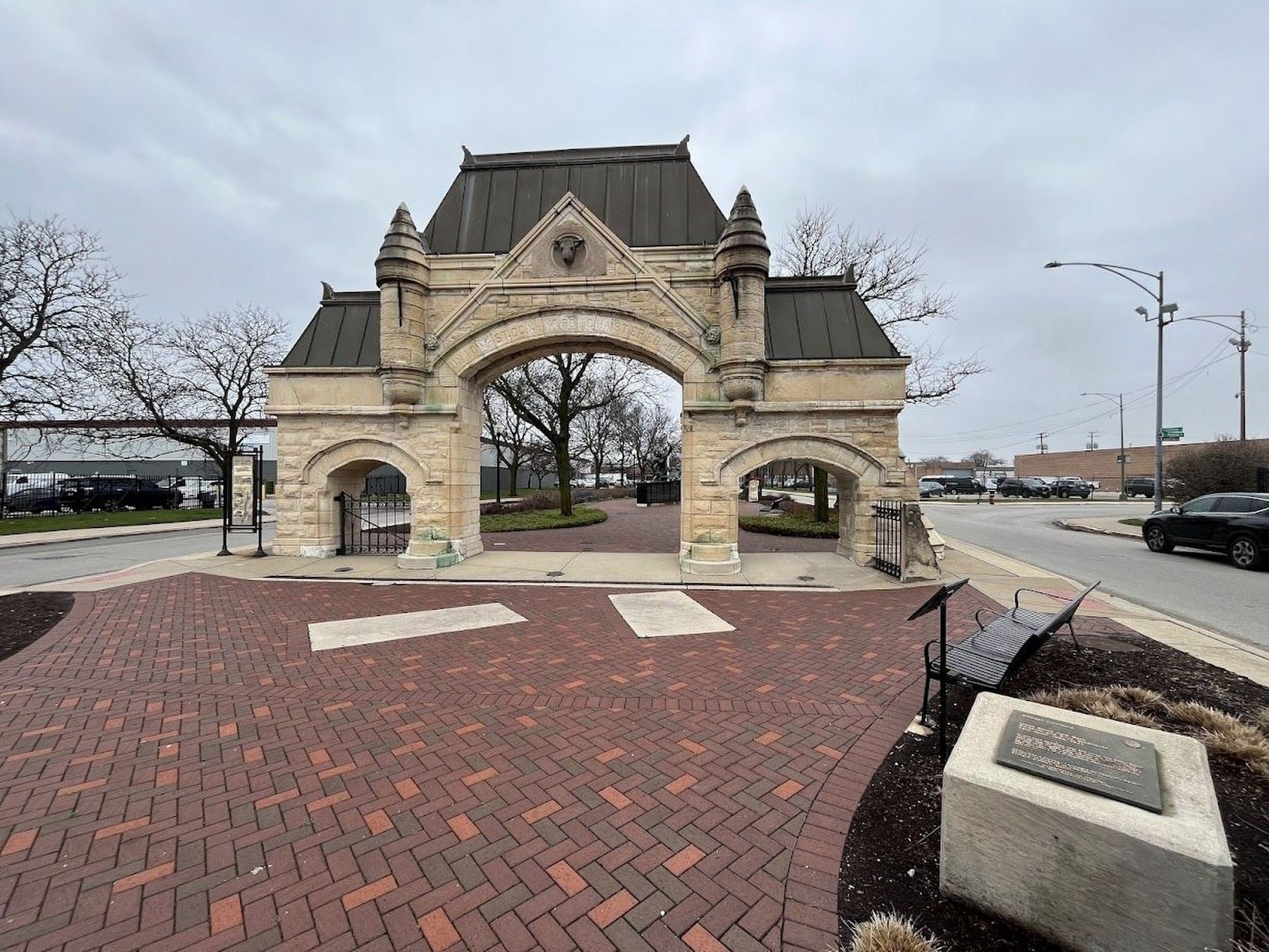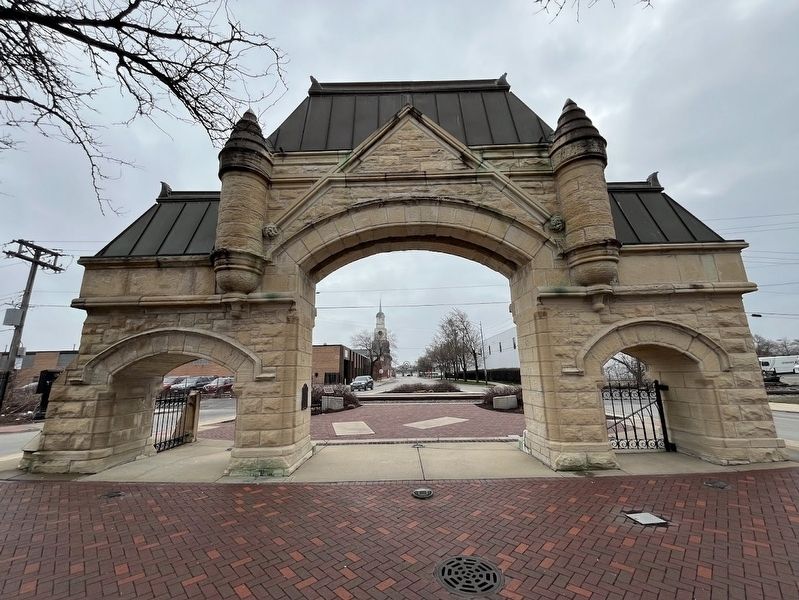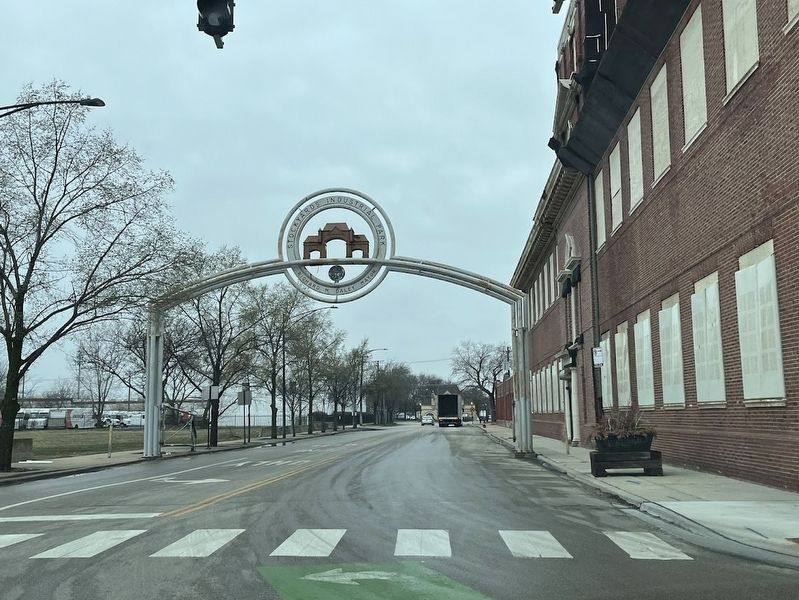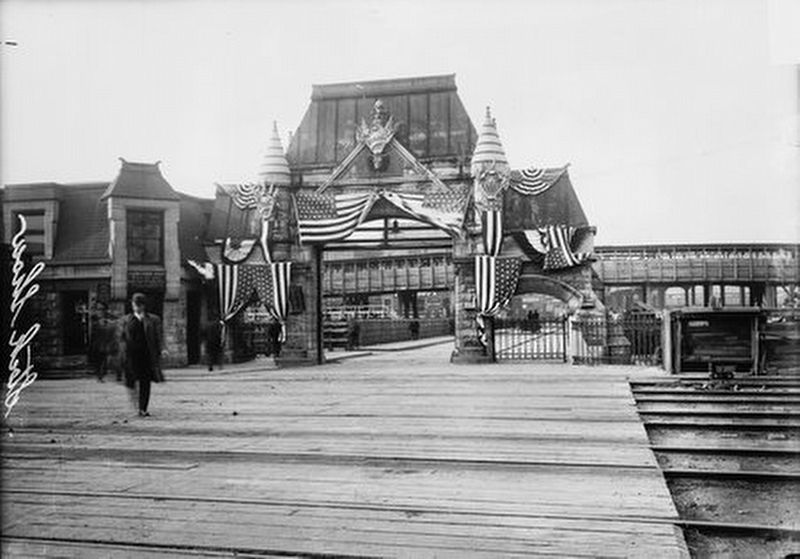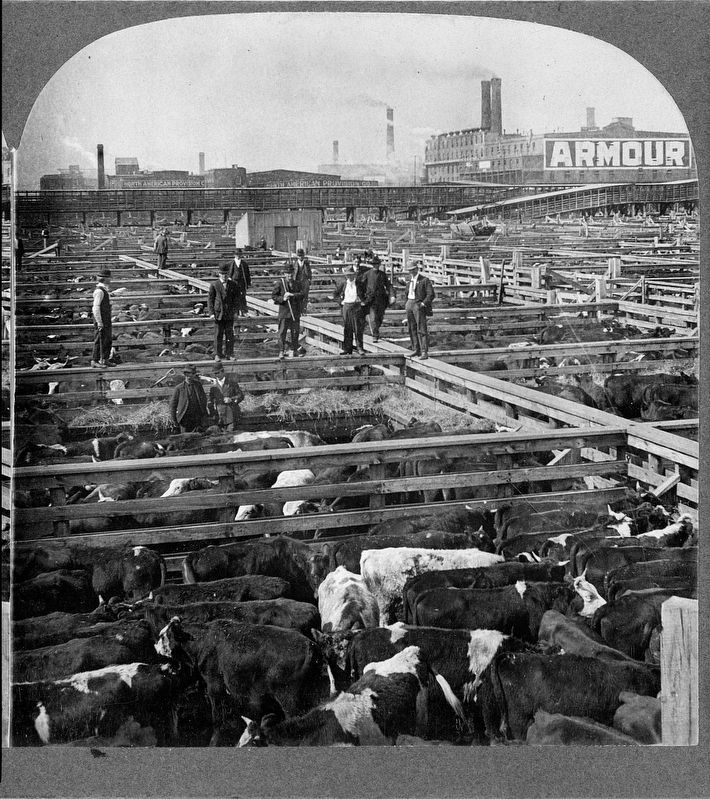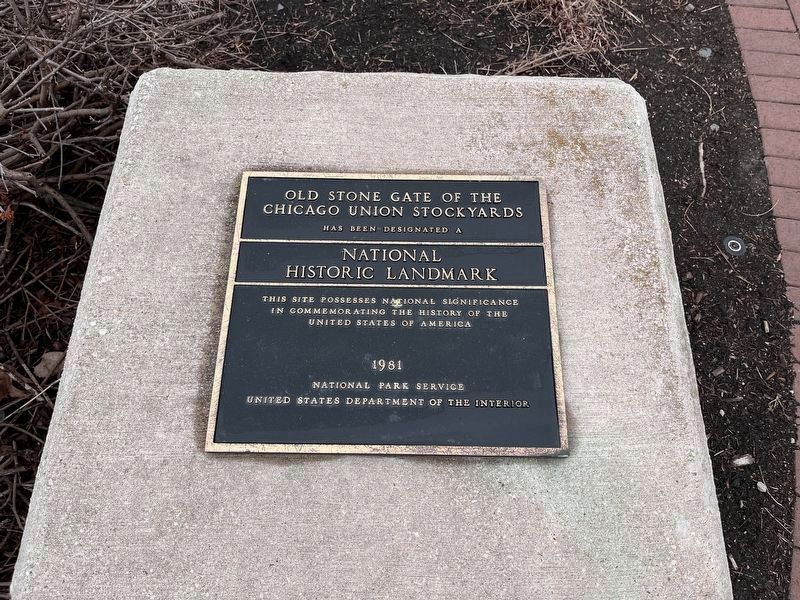Back of the Yards in Chicago in Cook County, Illinois — The American Midwest (Great Lakes)
Union Stock Yard Gate
Burnham and Root, architects; Yard open: 1865-1971
— Chicago Landmark —
At one time sprawling over 475 acres, the Union Stock Yard thrived for more than a century, then closed entirely. This rugged gate, erected in 1875, survives as one of the few visual reminders of Chicago's past supremacy in the livestock and meat-packing industries.
Designated a Chicago Landmark on February 24, 1972, by the City Council of Chicago.
Richard J. Daley, Mayor
Erected 1972 by Commission on Chicago Historical and Architectural Landmarks; City of Chicago.
Topics and series. This historical marker is listed in these topic lists: Agriculture • Industry & Commerce. In addition, it is included in the Illinois, Chicago Landmarks Commission, and the National Historic Landmarks series lists. A significant historical year for this entry is 1865.
Location. 41° 49.12′ N, 87° 38.904′ W. Marker is in Chicago, Illinois, in Cook County. It is in Back of the Yards. Marker is on West Exchange Avenue east of Peoria Street, on the left when traveling west. The marker is affixed to a concrete tablet on the ground about 15 paces east of the stockyard gate. Touch for map. Marker is at or near this postal address: 1260 S Peoria St, Chicago IL 60609, United States of America. Touch for directions.
Other nearby markers. At least 8 other markers are within one mile of this marker, measured as the crow flies. Leslie F. Orear (here, next to this marker); The Fallen 21 (a few steps from this marker); Union Stock Yard (a few steps from this marker); People of Canaryville (approx. 0.2 miles away); Lt. Joseph T. (Jay) McKeon Jr. Park (approx. 0.8 miles away); Andrew "Rube" Foster (approx. 0.9 miles away); Bridgeport and the Development of Chicago's Infrastructure (approx. one mile away); Carlton Fisk (approx. 1.1 miles away). Touch for a list and map of all markers in Chicago.
More about this marker. A separate marker with a more extensive history of the stockyards along with historic photographs can be found right next to the gate; a National Historic Register plaque is also nearby. The gate's designation as a Chicago Landmark in 1972, referenced on the plaque, occurred less than seven months after the stockyards closed for good in July 1971.
Regarding Union Stock Yard Gate. Chicago's status as Hog Butcher for the World, as Carl Sandburg put it in his iconic 1914 poem "Chicago," centered for a century around this location on Chicago's South Side. This gate along Exchange Avenue, which was originally the entrance
to the one-square-mile Union Stock Yard, is basically all the remains of what was once the symbol of Chicago's status as the nation's leader in meatpacking. The steer head over the central arch is believed to represent "Sherman," the prized bull owned by Union Stock Yard and Transit Company founder John B. Sherman.
As Chicago emerged as a railroad hub in the middle of the 19th century, so it also became a hub for the transport of livestock, especially during the Civil War. The Union Stock Yards opened in 1865 on marshy land south of the city as an attempt to consolidate Chicago's stockyards. The yards grew rapidly as advances in rail transport, including improved refrigeration, as well as operational innovations by companies run by entrepreneurs such as Gustavus Swift and Philp Armour enabled more meat to be processed more quickly in Chicago.
After peaking in the 1920s, the Union Stock Yard gradually declined through the middle of the 20th century as transportation and distribution practices changed, and the meatpacking industry decentralized. Both Armour and Swift closed their Union Stock Yard operations in the late 1950s, and after further decline the stockyards closed on July 30, 1971. Within seven months, the site was razed, and soon thereafter an industrial park opened on this site.
Today, the gate is the primary remaining physical evidence of
the massive stockyards that once stood here, and the yards themselves are best remembered for the literature they inspired: most notably Sandburg's poem and Upton Sinclair's novel The Jungle, about the stockyards' poor condition.
Also see . . .
1. The Union Stockyards: "A Story of American Capitalism". A 2021 documentary by WTTW Chicago (Channel 11, the city's PBS affiliate). (Submitted on April 2, 2024, by Sean Flynn of Oak Park, Illinois.)
2. Chicago Literary Hall of Fame: Union Stock Yard Gate.
Excerpt: "The United for Libraries’ Literary Landmarks program at one time commemorated the opening of The Jungle with a dedication at the Gate; however, the plaque is no longer in place there."(Submitted on April 2, 2024, by Sean Flynn of Oak Park, Illinois.)
Credits. This page was last revised on April 10, 2024. It was originally submitted on April 2, 2024, by Sean Flynn of Oak Park, Illinois. This page has been viewed 63 times since then. Photos: 1, 2, 3, 4, 5, 6, 7. submitted on April 2, 2024, by Sean Flynn of Oak Park, Illinois.
